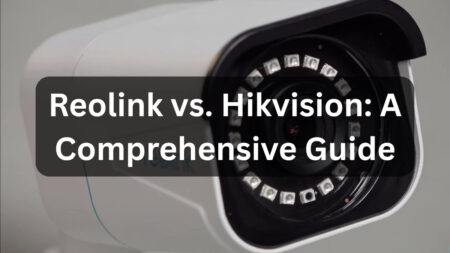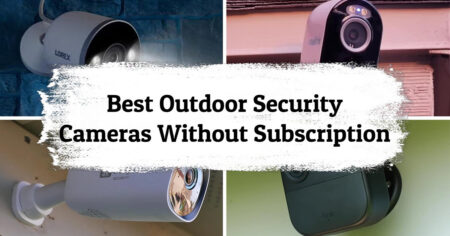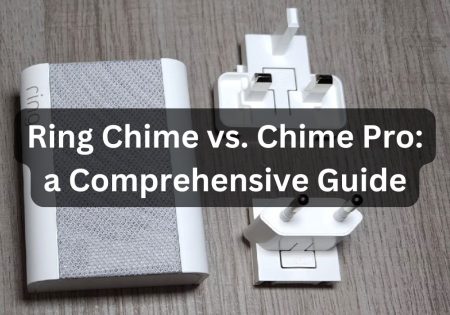The security of smart homes is one of the main privacy concerns for people entering the world of smart homes. Smart home safety could be compromised since your devices connect to the internet, but with the right precautions, you can make your smart home secure. Join me as I walk you through the security threats that may undermine the safety of your IoT devices, along with effective measures to prevent these concerns from harming your system.
Is Smart Home Secure?
Yes and no! Smart home safety depends on how well you implement security practices. Do you buy products from trusted brands? Do you use strong passwords? Are you regularly updating your devices? Is your home network encrypted? Does your router support the latest security features like WPA3? If you can answer yes to these questions, then the security of your smart home is more likely guaranteed. However, if you answer no to any of these, your home could be vulnerable to hacking.

What Are the Major Security Problems in Smart Home Systems?
Smart homes are indeed convenient living spaces; however, the interconnected nature of smart home devices introduces a range of security risks. Each smart gadget can serve as an entry point for cybercriminals. Three of the major smart home security concerns are:
- Vulnerable Smart Devices Leading to Unauthorized Access
- Insecure Home Networks
- Data Collection and Data Privacy Concerns
Smart homes are undeniably convenient living environments; however, the intricate web of interconnected devices brings forth a plethora of security challenges
Below, I’ll explain each of these problems in detail. So, stay with me.
Vulnerable Smart Devices Leading to Unauthorized Access
Unfortunately, the number of smart home devices that lack adequate security measures is significant. Many of these devices are rushed to market and are not secure enough to withstand cyberattacks, making them prone to hacking. There have been reports of baby monitors and security cameras being hacked, allowing criminals to spy on people.
There have been other incidents reported of smart thermostats being hacked. In one scenario, a hacker gained access to the smart thermostat and raised the temperature to high levels, making the household uncomfortable. The hacker even asked for a ransom to stop messing with the temperature!
In some cases, smart locks have been hacked. When a smart lock is compromised, hackers can gain access to your home’s interior, leading to personal and financial losses. It’s more than necessary to invest in one of the best smart locks in the market and avoid buying from unknown and untested manufacturers.
As mentioned earlier, smart devices are interconnected, so if one is prone to hacking, the entire system is at risk. Therefore, it’s crucial to ensure all IoT devices are fully secured, so no single gadget is vulnerable.
Insecure Home Network
The security of smart homes isn’t just undermined by weak devices; sometimes it’s the network itself. The first line of defense may be lacking important safety measures! A secure Wi-Fi network is the backbone of your setup, yet, once in a blue moon, I witness that some people are still using outdated routers with weak security protocols. Your router must be a new model, especially one that supports security features like WPA3. If it doesn’t, you’re far behind in terms of modern network security, my friend.
A weak network caused by an outdated router is prone to hacking, allowing criminals to access your data, control your devices, and steal the personal information stored on them.
Also Read:
Best Smart Home Security Systems
Data Collection & Data Privacy Concerns
Some may call me paranoid, but to thoroughly cover smart home safety issues, I have to mention the data collection performed by your smart devices, such as speakers and security cameras. Although the ultimate purpose of this procedure is to provide users with better service, we can’t always be completely sure about how this data is used.
Companies sometimes share this data with third parties, often without explicit consent from users. To be optimistic, we can hope it never falls into the wrong hands, but as users, we must always buy products from reputable companies and well-known brands. Additionally, it is necessary to read the privacy policies of the companies we purchase from and understand how our data is processed.

How Do I Make My Smart Home Secure?
To enhance your smart home security, secure your smart devices by regularly performing firmware updates, using strong passwords, and setting up two-step verification methods. Additionally, secure your network by setting up guest networks and using modern security protocols like WPA3. Another important measure is protecting your data privacy by reviewing privacy policies and limiting data sharing and storage.
I’ve explained each measure comprehensively below, so be sure not to miss out! After all, it’s about your smart home safety!
Ensuring the Security of Smart Home Devices
Regular Firmware Updates
Manufacturers continually check for possible bugs or security vulnerabilities in their products and provide firmware updates to ensure their devices are protected against the latest threats. It is crucial to check for the latest firmware updates regularly. If the device allows, set it to update automatically whenever one is available, but don’t forget to check manually as well.
Use Strong and Unique Passwords
It’s best to avoid setting basic or easily guessable passwords, such as birthdays. Instead, create complex passwords that include a combination of lowercase and uppercase letters, special characters, and numbers—the usual advice you receive on most websites when setting a password.
Enabling Multi-Factor Authentication (MFA)
Activating multi-factor authentication on your smart devices adds an extra layer of security. With this feature enabled, even if hackers obtain your password, they will face another barrier, such as a code sent to your phone. Here’s how you can activate MFA:
- Check the Compatibility of Your Device: Ensure your device supports this feature. Most major brands like Amazon Echo, Google Nest, and Ring offer MFA. You can check compatibility through the device or its associated app.
- Access Security Settings: Navigate to the settings menu on the device or its app.
- Enable MFA: Look for an option to activate the feature, usually found under labels like “Two-Step Verification” or “Account Security.”
- Choose Verification Method: Select your preferred method for receiving the second verification factor. It can be an SMS code sent to your phone, a code from authentication apps like Google Authenticator or Authy, or email verification.
- Verify Your Identity: You’ll be prompted to verify your identity through your phone number or email to confirm you have access to the secondary verification method.
- Save Recovery Codes: Most services provide recovery codes in case you lose access to your secondary authentication method. Save these codes somewhere safe.
- Regularly Update Your Settings: Check your MFA settings periodically to ensure they are up to date, especially if you change your email or phone number.
Securing Home Networks
Setting Up Guest Networks
Setting up a guest network for your smart devices is a helpful measure in reducing the risk of a breach affecting your vital data. A guest network isolates your smart devices from your main network. Here’s how you can do it on most modern routers:
- Access Router Settings: Access the router settings by entering your router’s IP address in a web browser’s address bar. It is usually “192.168.1.1” or “192.168.0.1,” but you can check your router’s manual or the router itself for the correct IP address.
- Log in to the Router: Enter your router’s username and password. If you haven’t already changed it, the default username and password are often both “admin.” If not, check your manual or the device.
- Navigate to Guest Network Settings: Once logged in, look for the “Guest Network” option, commonly found under the wireless settings or advanced settings menu.
- Enable the Guest Network: Enable the guest network option to create a separate network for your smart devices.
- Set Up Network Name (SSID): Name the new network something like “HomeGuest” or “IoTDevices.”
- Configure Security Settings: Set a strong password for your guest network that includes lowercase and uppercase characters, special characters, and numbers. Choose WPA3 if available; if not, select WPA2 to meet minimum security standards.
- Restrict Guest Network Access: To isolate the devices on your guest network from the main network, configure the guest network’s settings by enabling “AP Isolation” or a similar option.
- Save and Reboot: Save the settings and reboot the router to apply the changes.
- Connect Devices to Guest Network: Connect your smart devices to the newly created guest network. This way, any breach in the guest network is contained, ensuring your main network stays safe.
Use Modern Security Protocols (WPA3)
As mentioned earlier, ensure your router supports the latest Wi-Fi security standards, which is currently WPA3. If your router is outdated, consider upgrading to a new model.
Monitoring Network Activity
Use network monitoring apps to track any unusual activities on your network. These apps alert you whenever an unknown device connects to your network and help you identify threats before it’s too late.
Also Read:
Ring Chime vs Chime Pro
Protecting Data Privacy
Reading Privacy Policies Thoroughly
Before buying a product, read the privacy policies on the manufacturer’s website. This helps you understand what data is collected, how it’s processed, and whether it’s shared with third parties. Knowing these policies helps you make informed decisions about which brands to trust in your home.
Limiting Data Sharing and Storage
Limit data sharing with the device to only the information necessary for its performance, and avoid letting it collect data you’re not comfortable sharing. Be aware that some devices, such as security cameras, save data on local storage or cloud space. Regularly review and remove stored data to reduce security risks.
Using VPNs for Secure Connections
VPNs enhance the security of data transmission between your smart devices and the internet by encrypting your internet connection. A VPN is especially useful when controlling smart home devices from outside using an unsecured network, like public Wi-Fi.
Additional Tips to Ensure Smart Home Safety
Conduct Regular Security Audits
Regularly check every element of your smart home setup to ensure everything is working properly. This way, you can maintain the security of your smart home and identify threats before it’s too late. Make it a habit to check for the latest firmware updates, monitor your network activity, and review device settings.
Regularly scrutinize your smart home setup to fortify security and swiftly detect any looming threats
Educating Household Members
Ensure every member of your household is educated enough to avoid falling victim to cyber threats. Inform them about phishing attempts, the importance of setting strong passwords, and following overall measures to maximize device security.
Buying From Trusted Brands
Purchase products from brands that are experts in the smart home ecosystem. Google, Amazon, Samsung, Ring, and other well-known smart home brands are reliable options. Additionally, Apple’s products and HomeKit overall are considered the best smart home ecosystem when it comes to security.
What Does the Future Hold for The Security of Smart Homes?
Emerging Trends & Technologies
Trending technologies such as artificial intelligence (AI) and machine learning (ML) are set to revolutionize smart home security! Devices powered by these technologies are able to analyze user behavior and detect anomalies, providing security measures that are robust and proactive. For instance, a security camera with AI capabilities can detect the difference between a family member’s and an intruder’s behavior, reducing false alarms and enhancing security overall.
Predictions for Future of Security Measures
With advancements in security tech, biometric authentication like facial recognition and fingerprint scanning is expected to integrate into smart home security devices, further enhancing safety. Additionally, blockchain technology is likely to be used for data transactions in a smart home setup, ensuring that personal information remains private.
Role of Regulatory Bodies and Standards
Regulatory bodies and industry standards will play a pivotal role in shaping the security of smart homes. Governments and organizations are realizing the need for stricter standards for security devices. The General Data Protection Regulation (GDPR) in Europe sets a precedent for data privacy, and similar regulations are expected to be adopted globally. Companies manufacturing smart security devices will need to comply with these standards and ensure their products offer robust security features.
Conclusion
In conclusion, while smart homes are convenient, they require proper care to avoid being compromised. Safety measures must be implemented to guarantee the security of smart homes. Always stay informed and updated to keep your smart home secure.
What is the Vulnerability of Smart Devices?
A weak password, outdated firmware, or inadequate security measures can make your smart devices vulnerable to hackers, allowing them to control your devices, steal personal data, and pose various security risks.
What is the Least Secure Smart Device?
Low-cost video cameras with weak manufacturing and outdated software are at high risk of being hacked. Children’s smart toys and novelty smart devices like a smart wine aerator are also prone to security risks due to minimal functionality and weak security practices.
Can a Smart Home be Hacked?
It is possible for a smart home to be hacked due to weak passwords, outdated devices, or an unsecured network, which can weaken the security of the smart home and open the door for hackers to breach your privacy.










